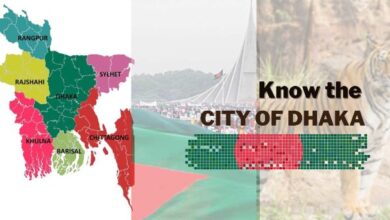The Idyllic Beauty of Madhupur Rubber Garden

A lush green landscape lies in the serene Pirgacha Rubber Garden, located at Madhupur in Tangail, just a short distance from Dhaka.
Nestled in the peaceful landscape of Madhupur, Tangail, the Pirgacha Rubber Garden is a natural haven not far from the bustling metropolis of Dhaka. This lush green escape, part of Bangladesh’s rich and diverse scenery, offers visitors a serene getaway and a glimpse into the country’s agricultural practices. While rubber is often thought to be primarily cultivated in Europe or America, this resilient tree, scientifically named Ficus elastica, has deep roots in the tropical regions of South and Southeast Asia. To understand how this versatile material integrates with local industry and culture, it’s worth exploring the broader context of Bangladesh’s development and offerings, starting with insights into its vibrant capital in Everything You Wanted to Know about the City of Dhaka, Bangladesh.
Rubber, a vital material in everyday life, has long piqued people’s curiosity. Scientifically known as Ficus Elastica, it is commonly referred to as the rubber fig, rubber bush, or Indian rubber tree. This species belongs to the Moraceae family and originates from the tropical regions of South and Southeast Asia. However, many Bangladeshis mistakenly believe that rubber is cultivated only in Europe or America, despite its historical roots and cultivation efforts in Asian countries, including Bangladesh.
This sprawling 3,000-acre plantation, established in 1986, houses over 154,000 rubber trees, making it one of the country’s largest and most scenic rubber gardens. A visit to this garden offers more than just a glimpse of rubber production—it’s an immersion into natural beauty, diverse cultures, and wildlife.
A Glimpse into the History
Though many Bangladeshi might associate rubber cultivation with Europe or the Americas, the journey of rubber farming here began under British colonial rule in the early 20th century. The forest department initially planted rubber trees experimentally in Tangail and Chattogram in 1952, which eventually led to the creation of commercial plantations across regions such as Sylhet, Bandarban, Khagrachari, and Madhupur.
Madhupur, known for its scenic natural beauty, is home to some of the most striking rubber plantations. The Pirgacha Rubber Plantation stands out for its perfectly aligned rows of tall rubber trees, whose dark green leaves create a soothing canopy. A walk along the shaded paths, especially during the monsoon, brings the landscape to life with vibrant greenery, as the rain breathes freshness into every leaf.
A Year-Round Beauty
The garden’s beauty transforms with the seasons. In winter, the trees shed their leaves, revealing a bare and minimalist charm. However, in the rainy season, the garden flourishes into a sea of deep green, evoking the beauty of a vibrant, youthful spirit. Walking under the moonlight among the endless rows of trees is a magical experience, making the plantation look like a fairyland.
A Stay amidst Nature and Culture
The garden offers a guest house for visitors seeking a deeper connection with nature. Nestled amid flowering plants, the guest house provides a perfect retreat to enjoy the sound of rain hitting the tin roof while sipping a hot cup of tea. For those who prefer a bit more adventure, a factory within the plantation showcases how rubber sap is harvested and processed into sheets. Visitors also get a unique opportunity to interact with the indigenous Garo community, who live within the garden, preserving their traditional way of life.
Travel Tips and Accessibility
Madhupur is easily accessible by bus from Dhaka’s Mohakhali bus terminal, with the garden just 10 kilometers from the Madhupur bus stand. Visitors can hire CNGs, motorcycles, or autos to reach the plantation. While several affordable residential hotels are available near the bus stand, the plantation’s guest house offers a charming alternative, albeit with prior permission required.
The plantation’s location near the Modhupur Garh forest adds another layer of excitement. Here, visitors can spot wildlife, especially monkeys, but it is advisable to inform the local authorities before venturing into the deeper forest areas for safety.
The Madhupur Rubber Garden is more than just a commercial venture—it’s a gateway to reconnecting with nature, learning about sustainable agriculture, and experiencing cultural diversity. A visit here offers a rare combination of exploration, tranquility, and education. Whether for an afternoon walk or an extended retreat, the Pirgacha Rubber Plantation promises an unforgettable experience in the lap of nature.



